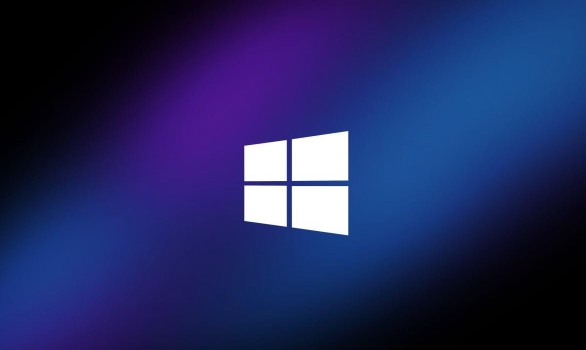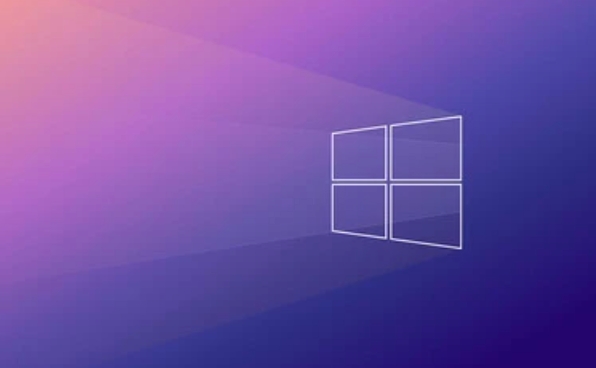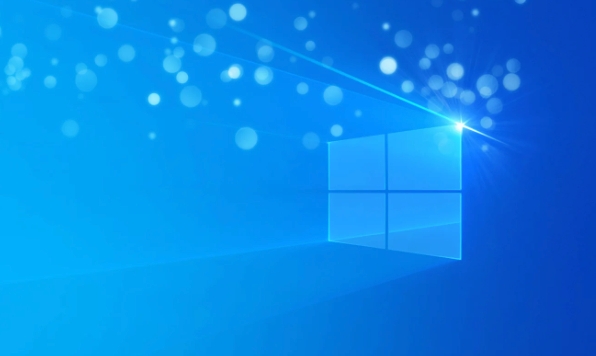The key to joining a Windows Server domain is to ensure that the network, DNS, and permissions are ready, and then complete through system properties or command line operations. 1. Ensure network connectivity, DNS points to domain control, and have domain administrator rights; 2. Enter domain name and account information through "System Properties → Computer Name → Change → Select Domain" to complete domain addition; 3. If you encounter problems, you can troubleshoot network, DNS, account permissions and group policy restrictions; 4. You can also use the PowerShell command Add-ComputerDomain to implement domain addition operations.

Adding a computer to a Windows Server domain is a common operation in enterprise network management, with the main purpose being unified permission control, policy management, and resource sharing. To do this, you need domain administrator permissions and ensure that the network connection between the local computer and the domain controller is normal.

1. Make sure the network and permissions are ready
Before you begin, there are several key points that must be confirmed:

- Network connectivity : Ensure that your computer can access the domain controller (usually ping) over the network.
- DNS is set correctly : The computer's DNS must point to the IP address of the domain controller, or at least have a DNS server that can resolve domain information.
- Domain Administrator Permissions : You must have an account that can be joined to the domain, usually a user with "Get Computers to Domain" permission.
If these conditions are not met, subsequent operations may fail, such as prompting "Domain Controller Not Found" or "No Permissions".
2. Join the domain on the Windows client
The steps are as follows (for Windows 10/11 Pro or Enterprise Edition):

-
Open System Properties:
- Right-click "This Computer" → "Properties" → click "Advanced System Settings" on the left.
- In the System Properties window, switch to the Computer Name tab.
Click the "Change" button, select "Domain" in the pop-up window, and then enter the domain name you want to join (such as
example.com).After entering, the system will try to contact the domain controller for verification. At this time, you need to enter the account information with permission to join the domain (format is
domain\username).If everything goes well, you will be prompted to restart your computer to apply the changes.
Note: After joining the domain, you can use the domain account to log in to the computer.
3. How to troubleshoot problems?
If you encounter problems during the process of joining a domain, you can start from the following aspects:
-
Error prompt "Domain controller not found" :
- Check whether the network is unobstructed.
- Confirm that DNS is pointing to the domain controller correctly.
- Try manually ping the domain name to see if it can be parsed.
-
Prompt "Access denied" or "No permissions" :
- Make sure the account you are using has permission to join the domain.
- If you are a regular user, you may need to contact an IT administrator for assistance.
-
Domain addition was successful but cannot log in with domain account :
- Make sure that the domain account has permission to log in to the computer.
- Check whether Group Policy has relevant restrictions.
4. Join the domain using the command line (optional)
If you like to use the command line, you can also implement it through PowerShell:
Add-ComputerDomain -DomainName example.com -Credential (Get-Credential)
After executing this command, a dialog box will pop up to allow you to enter the domain account information with permissions. Restart after completion and take effect.
This method is suitable for batch deployment or remote management scenarios, especially for users who are familiar with script operations.
Basically that's it. The whole process is not complicated, but every step is easily stuck due to configuration problems, especially network and DNS related settings. As long as you do enough preparations in the early stage, the actual operation is actually very fast.
The above is the detailed content of How to join a computer to a Windows Server domain?. For more information, please follow other related articles on the PHP Chinese website!

Hot AI Tools

Undress AI Tool
Undress images for free

Undresser.AI Undress
AI-powered app for creating realistic nude photos

AI Clothes Remover
Online AI tool for removing clothes from photos.

Clothoff.io
AI clothes remover

Video Face Swap
Swap faces in any video effortlessly with our completely free AI face swap tool!

Hot Article

Hot Tools

Notepad++7.3.1
Easy-to-use and free code editor

SublimeText3 Chinese version
Chinese version, very easy to use

Zend Studio 13.0.1
Powerful PHP integrated development environment

Dreamweaver CS6
Visual web development tools

SublimeText3 Mac version
God-level code editing software (SublimeText3)

Hot Topics
 How to remove password from Windows 11 login
Jun 27, 2025 am 01:38 AM
How to remove password from Windows 11 login
Jun 27, 2025 am 01:38 AM
If you want to cancel the password login for Windows 11, there are three methods to choose: 1. Modify the automatic login settings, uncheck "To use this computer, users must enter their username and password", and then restart the automatic login after entering the password; 2. Switch to a passwordless login method, such as PIN, fingerprint or face recognition, configure it in "Settings>Account>Login Options" to improve convenience and security; 3. Delete the account password directly, but there are security risks and may lead to some functions being limited. It is recommended to choose a suitable solution based on actual needs.
 I Became a Windows Power User Overnight With This New Open-Source App from Microsoft
Jun 20, 2025 am 06:07 AM
I Became a Windows Power User Overnight With This New Open-Source App from Microsoft
Jun 20, 2025 am 06:07 AM
Like many Windows users, I am always on the lookout for ways to boost my productivity. Command Palette quickly became an essential tool for me. This powerful utility has completely changed how I interact with Windows, giving me instant access to the
 How to uninstall programs in Windows 11?
Jun 30, 2025 am 12:41 AM
How to uninstall programs in Windows 11?
Jun 30, 2025 am 12:41 AM
There are three main ways to uninstall programs on Windows 11: 1. Uninstall through "Settings", open the "Settings" > "Apps" > "Installed Applications", select the program and click "Uninstall", which is suitable for most users; 2. Use the control panel, search and enter "Control Panel" > "Programs and Functions", right-click the program and select "Uninstall", which is suitable for users who are accustomed to traditional interfaces; 3. Use third-party tools such as RevoUninstaller to clean up more thoroughly, but pay attention to the download source and operation risks, and novices can give priority to using the system's own methods.
 How to run an app as an administrator in Windows?
Jul 01, 2025 am 01:05 AM
How to run an app as an administrator in Windows?
Jul 01, 2025 am 01:05 AM
To run programs as administrator, you can use Windows' own functions: 1. Right-click the menu to select "Run as administrator", which is suitable for temporary privilege hike scenarios; 2. Create a shortcut and check "Run as administrator" to achieve automatic privilege hike start; 3. Use the task scheduler to configure automated tasks, suitable for running programs that require permissions on a scheduled or background basis, pay attention to setting details such as path changes and permission checks.
 Windows 11 Is Bringing Back Another Windows 10 Feature
Jun 18, 2025 am 01:27 AM
Windows 11 Is Bringing Back Another Windows 10 Feature
Jun 18, 2025 am 01:27 AM
This might not be at the top of the list of features people want to return from Windows 10, but it still offers some usefulness. If you'd like to view the current minutes and seconds without turning on that display in the main taskbar clock (where it
 Windows 10 KB5061087 fixes Start menu crash, direct download links
Jun 26, 2025 pm 04:22 PM
Windows 10 KB5061087 fixes Start menu crash, direct download links
Jun 26, 2025 pm 04:22 PM
Windows 10 KB5061087 is now rolling out as an optional preview update for those on version 22H2 with Start menu fixes.
 Microsoft: DHCP issue hits KB5060526, KB5060531 of Windows Server
Jun 26, 2025 pm 04:32 PM
Microsoft: DHCP issue hits KB5060526, KB5060531 of Windows Server
Jun 26, 2025 pm 04:32 PM
Microsoft confirmed that the DHCP server service might stop responding or refuse to connect after the June 2025 Update for Windows Server.
 Building Your First Gaming PC in 2025: What You Actually Need
Jun 24, 2025 am 12:52 AM
Building Your First Gaming PC in 2025: What You Actually Need
Jun 24, 2025 am 12:52 AM
In the past, I always viewed the i5 lineup as anemic when it came to gaming. However, in 2025, a mid-range CPU is more than enough to start your gaming journey. Many games still don’t fully utilize multi-core performance as well as they could, so






